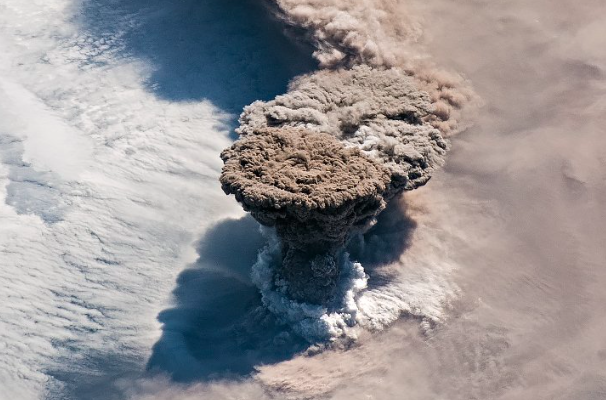Raikoke Volcano on the Kuril Islands has been dormant since 1924. But at around 4 am on June 22, a plume of ash and volcanic gases shot out of its crater. Several satellites and astronauts on the International Space Station spotted a thick plume as it rose, and then streamed east into a storm rotation that was wheeling through the North Pacific.
Astronauts shot the photograph above of the volcanic plume rising in a narrow column and then spreading out in a part of the plume known as the “umbrella region,” which is described as the area where the density of the plume and the surrounding air equalize and the plume stops rising and flattens out. The ring of clouds at the base of the column is probably water vapor.
Raikoke is a small, oval-shaped island and flows likely entered the water, scientists have speculated.
The island is 1,348 miles west of Adak, Alaska, south of the Kamchatka Peninsula.
Find out more about this volcanic island at the Smithsonian Institute.
